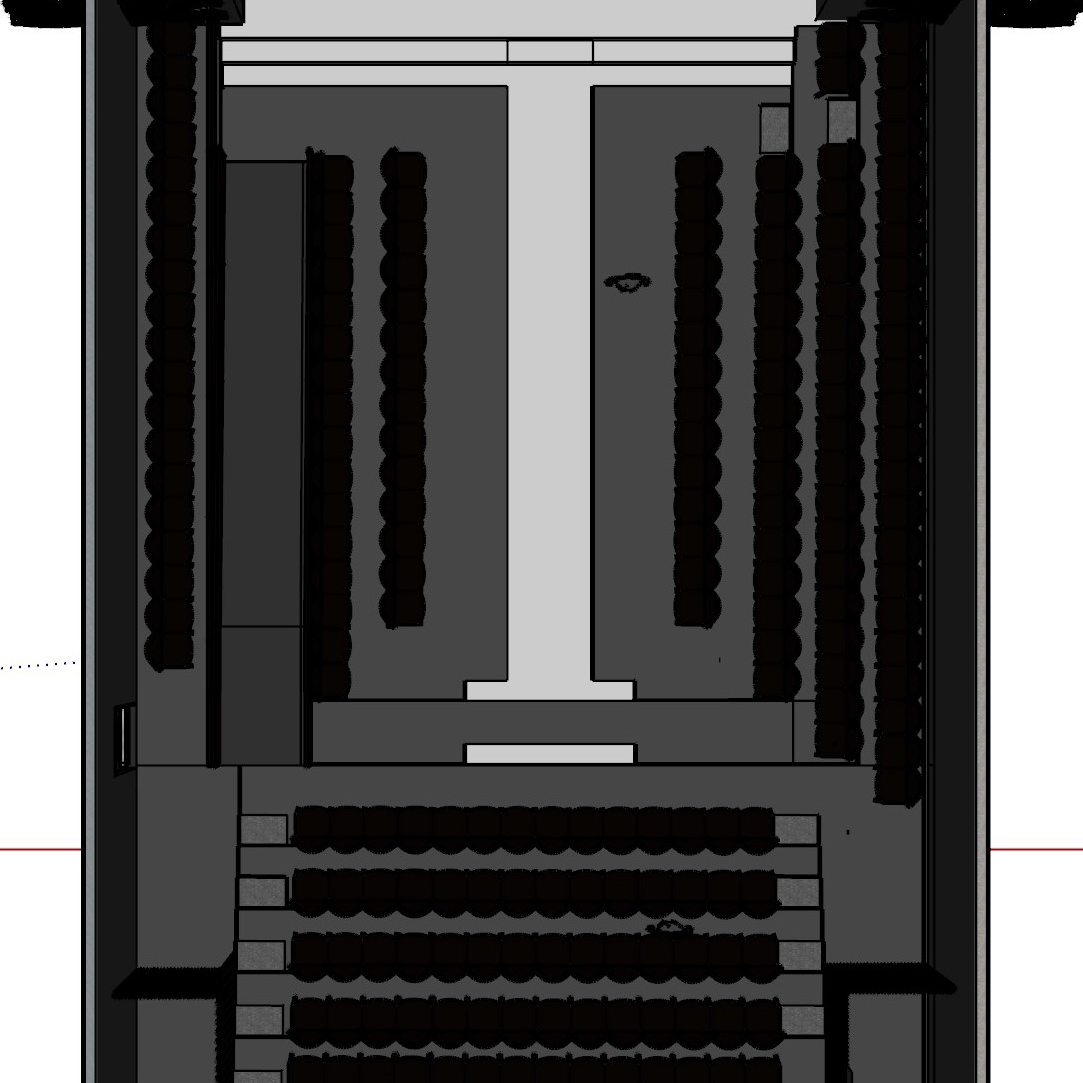The Design Team on Two Lakes, Two Rivers completed two designs for our show. One for the Experimental Theatre on SDSU’s campus and one for the Zoom space. Each of these designs informed the other. What is shared below reflects the designs for an in-person theatre production.
See renderings for the designs and statements from the designers below.
Lighting Design
by Deanna Trethewey




As an undergraduate student, I was very excited about the opportunity to design the lighting for what would have been my first mainstage, full-length production here at SDSU. I was attached to the project in early March and was most excited about collaborating with the other designers and the rest of the production team to create a world for the play that would highlight the intricate themes. The design process started with reading and analyzing the play then searching for imagery to capture my emotional response to the play which, at the time, was set to be a fully realized production in the Experimental Theatre on SDSU’s main campus. By the end of April and with the pandemic still making uncertain the future of live theatre, our director, Dani Bedau, made the decision to produce our show in an entirely virtual format that ended up being through Zoom. The other designers and I still expressed interest in pursuing a traditional design of the production as if it would be in the Experimental Theatre and concurrently decided to work on both the Zoom production and a theoretical design in the Experimental Theatre.
The majority of my work on this production has been thinking about how I would light the show in a physical setting – what colors, angles, intensities, or effects I would use – and let that work inform the Zoom production. As a designer, producing the play in a virtual setting has allowed me the opportunity to be more involved with the design process than for a physical production as I got to sit in on rehearsals, explore the themes of the play as a collective company, and work collaboratively to devise theatre in a way that hasn’t been fully normalized before. For the Experimental Theatre theoretical production, you can see examples of work I did with both watercolor and 3D computer drafting in Vectorworks of how I envisioned the lighting to look on the stage. For the Zoom performance, my contribution involved researching lighting equipment kits that could be shipped to actors and working with the actors on a case by case basis to set up their personal green screen studios. Taking into consideration Jenni’s Zoom backgrounds, I also worked with the actors to teach them how to use their lighting kits in an effective way that would provide continuity and cohesion between them and their respective backgrounds.
I feel very fortunate to be a part of this production as it has allowed me the freedom to design in a theatrical space and the opportunity to devise a unique virtual theatre experience that anyone with a computer and an internet connection can enjoy.
~Deanna Trethewey
Scenic Design
by Jenni Baldwin



Any theatrical production comes with a learning curve. My initial introduction to scenic design was through my experiences as a scenic artist, so making an adjustment toward completing a project entirely on a computer was huge. So much of theatre is about connection and communication, and it was jarring to find myself working alone at home most of the time. However, once rehearsals began, it was remarkable working closely, not just with fellow designers, but with actors, dramaturgy, and VFX creators. I designed a set that could work for this show in SDSU’s Experimental Theater (some sketches are here). This work inspired and informed the final digital backgrounds utilized in the Zoom production. While I miss working with my hands, I learned the value in dedicating time to research and sketches that nobody but myself will ever see. Picasso said it best, “Inspiration exists, but it has to find you working.”
-Jenni Baldwin
